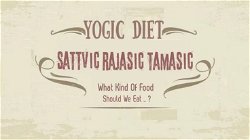Science of Human Wellness, The Complete Health Series
Ayurveda
. 1 min read
There is a Science of Wellness which is useful to all human beings regardless of one’s position, gender, nationality, religion and social status and we are hereby dedicating series of such articles on Yoga and Ayurveda to the welfare of all sentient beings who will show little gallantry & knowing spirit to walk with us during this series to understand health in entirety, and delve consciously into compositions, which are not just the display of idioms and phrases, sentences and paras you usually read but a groundbreaking work based on ‘Ayurvedic and Yogic Wisdom with modern view’. This series has been distilled from writer’s lengthy period of living experience of Holistic Yogic Sciences, healing tools and thousands of hours of meditation; this is simple step-by-step bestowal to take better care of yourself and great priority has been accorded to those points which amounts to utmost in physical and emotional well-being. Also the topics are not tediously long and too technical, but short (covering essential part only) and extremely effective & easy to use in our day to day life.
Objective of Wellness series on Yoga and Ayurveda:
Purpose behind this exposition is not only to deepen your understanding of yoga & Ayurveda by referring you to read classical texts but to make substantial betterment in your health and sanity. It is not to restrict you going to doctor but by following this you can practice an healthy & blissful life.
While writing this series, I was inspired from following Classical Texts related to Ayurveda and Yoga:
1. Hatha Yoga Pradipika
2. Ashtanga Hridayam
3. Rasa Tattwa chintamani
4. Rasaratna Samuchchaya
5. Sharangdhara Samhita
6. Charaka Samhita
7. Harita Samhita
8. Ashtanga Samgraha
9. Gheranda Samhita
Articles on Wellness (with essence of Ayurveda and Yoga) are listed as under:
1. Need & Advantages of Yoga and Ayurveda for better Health
2. Fundamentals of Ayurveda, Pancha Bhoota, Sapta Dhatus, Tridosha
3. Health and Ayurveda, Know Your Physical Constitution
4. Mental Constitution (Sattwa, Rajas and Tamas) and Correlation to Four Fires
5. Art of Eating and It’s Great Health Benefits
6. Sattvic, Rajasic and Tamasic Foods-Yogic Diet and Effect
7. Healing Effect of Various Foods
8. The Ayurvedic Diet: What to Eat for Wellness and Longevity?
9. Five Great Causes of a Disease and Their Remedy in Ayurveda
10. Four Health Killer: Physical and Mental Disequilibrium
Keep this promise-by the time you finish reading these articles you will look upon your body and health in new different way; you will be aware about powerful healing tools and tracks which are free from limitations in terms of efficacy and you will have clear strategy to nullify the malefic imbalances related to health you have unconsciously created till date.
More Stories from
Art of Eating and It's Great Health Benefits
Lose weight or gain weight, fight with reflux or acidity or other long ailments by practicing Art of Eating and common sense eating. diet according to season
The Ayurvedic Diet: What to Eat for Wellness and Longevity?
Restoring pH balance in the body is important as imbalance may lead to either acidosis or alkalosis. More sattvic food you eat, healthier your body will be.
Five Great Causes of a Disease and Their Remedy in Ayurveda
Five fundamental causes of disease are: Bad Food Combinations and Habits, Time of Eating, Ageing, Unrighteous thoughts and actions and Fate or Prarabdha Karma.
Sattvic, Rajasic and Tamasic Foods-Yogic Diet and Effect
Whole dietary concept in Ayurveda is divided into Sattvic, Rajasic and Tamasic foods and says that
Need & Advantages of Yoga and Ayurveda for better Health
Yoga and Ayurveda have great scientific, solve medical and scientific mysteries in light of Yoga and Ayurveda. Advantages of Yoga and Ayurveda, Health.






